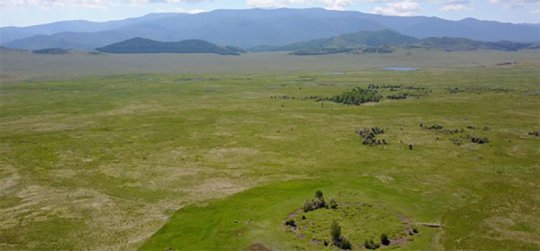The 500 thousand years archaeological discovery in Israel
The Jaljulia site is located north-east of Tel Aviv, right next to the modern Route 6 motorway, one of Israel's busiest, and a few meters from a subway line.
“It is also difficult for us to believe that just a few steps from a very modern highway, only five meters below the surface, there is an ancient site of about half a million years so extraordinarily preserved ".
Ran Barkai, head of the Department of Archeology at the University of Tel Aviv, is incredulous when he tells about the first major archaeological discovery in 2018, which he himself actively participated in Jaljulia , north-east of the capital of Israel . A site dating back to the Palaeolithic, about 500 thousand years ago, can be associated with homo erectus, a species of hominid that is believed to have been the first to work and use bifacial stones and to use fire.
Credits
And in fact, in the resort located right next to the modern Route 6 motorway , one of Israel's busiest, and a few meters from a subway line, Israeli archaeologists have discovered hundreds of chipped flint stones on both sides called amygdans, used as tools to chop vegetables and dig roots. Excavations in this area began because of urban development plans that required prior archaeological approval, the authorities said. " It had to be a sort of paradise for prehistoric hunters and gatherers, with plenty of greenery and animals, " added Barkai.
Check here for Further reading
Prince Buried In The Swamp
A Swiss archaeologist discovered in the south of Siberia the largest and oldest funerary burial mound.
A tomb of a prince of the Scythians was discovered in a swamp of southern Siberia thanks to the work of an archaeologist from the University of Bern, supported by the Swiss National Fund for Scientific Research.
The funeral mound, the largest and oldest of its kind, was not discovered by Gino Caspari thanks to a shovel but with a computer. Analyzing the high resolution satellite images of Tuva , where other tombs had already been found, he identified a circular structure.
Exploratory excavations have confirmed that it is a tomb of a prince dating back to the ninth century BC and it is hoped to find artifacts in an excellent state of conservation. The outer layer of stones with which the mounds are built in fact allows the permafrost to remain frozen throughout the year, also preserving the organic and delicate finds.
Check here for Further Reading
A Mysterious Stone Monument Discovered in Mongolia
It is a 1300-year-old Turkish sarcophagus surrounded by 14 stone pillars, each of them covered with particular Turkish runic inscriptions. These suggest that the burial place belongs to a viceroy, or Yabgu, the highest degree, a step below the emperor, during the reign of Tengri Qaghan, some 1,300 years ago.
The ruins were discovered in the Dongoin Shiree steppe in eastern Mongolia by a joint excavation team from the University of Osaka and the Institute of History and Archeology of the Mongolia Academy of Sciences. It is not known, however, why the pillars were arranged in this way. "The provision of these will provide important information to discuss religious ideas and the vision of the world of the ancient nomads," say the researchers.
WHY GOING OUT
Much of Mongolia 's territory is covered by steppes, with mountains to the north and west, and the Gobi desert to the south. Ulan Bator is the true tourist center of the country, as well as the capital and its largest city. About 38% of the population live here. Its name, attributed since 1924, means "Red Hero".
NOT TO BE MISSED
Among the tourist attractions that reach Mongolia are the Gorkhi-Terelj National Park, the Genghis Khan Statue Complex and the National History Museum. The latter houses many dinosaur fossils that have been found at various sites in Mongolia. All three sites, it is no accident, are located in Ulan Bator. But in these surroundings are also the Gandantegchenling Monastery, with its 25-meter-tall Migjid Janraisig statue, the Zaisan Memorial and the Choijin Lama Temple Museum.
Check here for Further Reading


